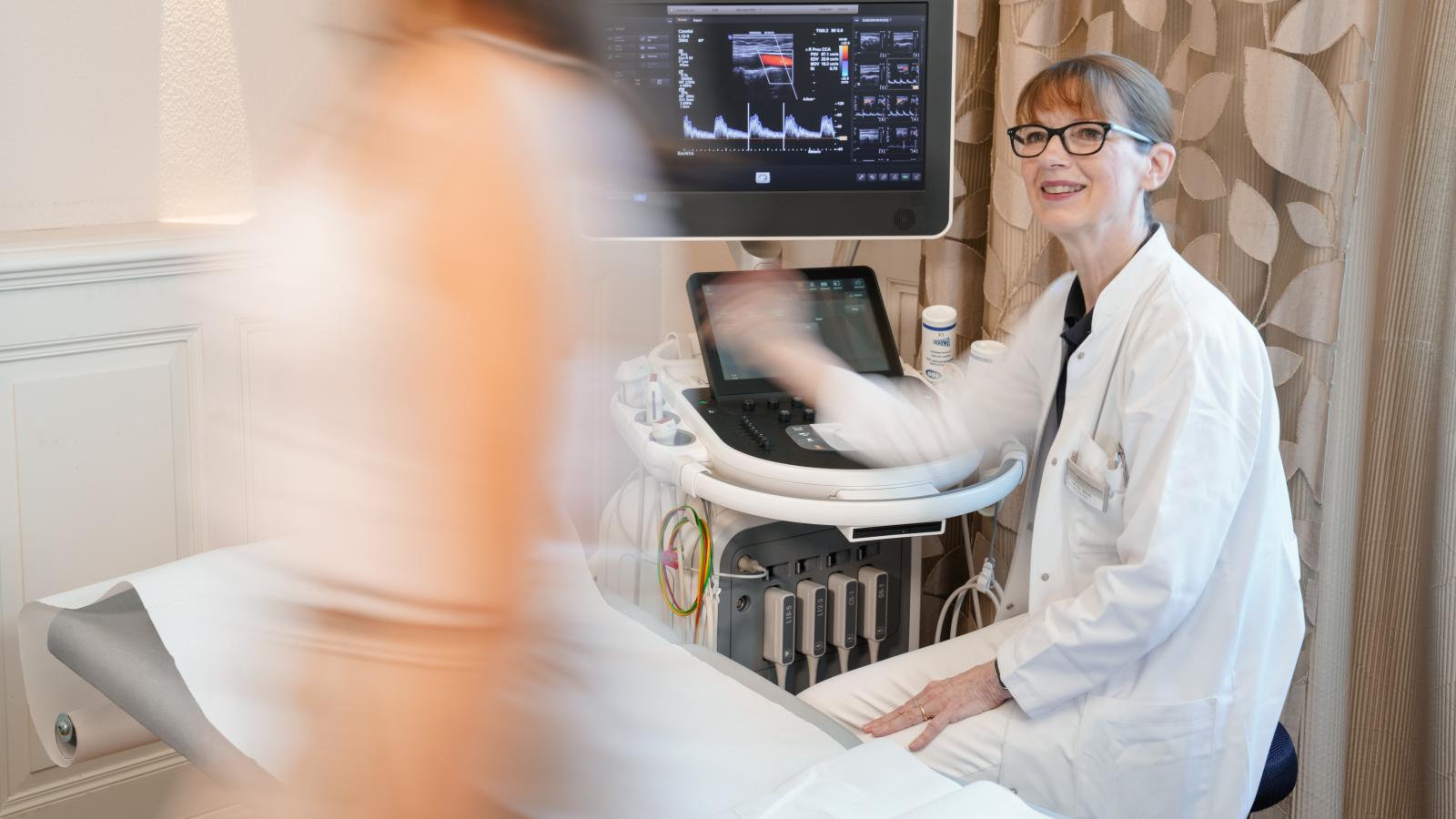Frequently asked questions in vascular medicine

What do angiologists do?
Angiologists are medical specialists who specialise in the anatomy, physiology and diseases of the blood vessels. This includes the examination and treatment of arteries, veins and lymphatic vessels.
Who comes for angiological clarification?
An angiological examination may be indicated for the following symptoms:
• Pain or cramps in the legs when walking (intermittent claudication).
• Numbness, tingling, weakness or pain in the arms or legs
• Skin changes such as redness, skin ulcers or discoloured skin
• Family history of vascular disease
As a rule, your family doctor will decide when an angiological examination is necessary. Alternatively, you can also contact us directly if you have a free choice of doctor as your insurance model.
At the MEDIS practice, specialists in angiology and phlebology (vein medicine) work closely together. If venous vascular disease is suspected, we recommend a direct examination in our vein centre.
How does an angiological examination work?
The first step is to discuss the symptoms and complaints and which examinations are indicated in an anamnestic interview. The examination methods in angiology are very different and can vary according to need. As a rule, we will measure your vital signs (blood pressure, pulse, height, weight) and then carry out a colour-coded ultrasound examination of the affected vessels (duplex sonography). In addition, various examinations for the functional assessment of circulatory disorders may be necessary to enable a comprehensive diagnosis to be made.
Why should a check-up be carried out at regular intervals?
Vessels and their structures can change constantly. Various factors such as ageing processes, underlying diseases or external factors can influence this change. The risk factors that cause vascular diseases can also change over time, sometimes significantly. Due to this constant process, it is therefore necessary to check the vessels regularly, especially if a disease is already present. However, the intervals between these checks can vary.
Cramping pain when walking - what does that mean?
Do you often have cramping pain in your legs when walking, which subsides as soon as you stand still for a longer period of time?
The reason for this could be intermittent claudication. This disease is technically known as peripheral arterial occlusive disease (PAD). It is a disease in which the blood flow to the legs and arms is disturbed or interrupted. In order to make an accurate diagnosis and avoid further complications, an angiological examination is advisable.
Tips for healthy blood vessels:
In this day and age, we sometimes have too little time to look after our bodies and our health. However, this is necessary to keep our blood vessels healthy for as long as possible. Our tips for preventing vascular diseases:
Quit smoking: Smoking is one of the main factors in the development of vascular disease. You can significantly reduce your risk by quitting smoking.
Healthy diet: A balanced diet contributes to the health of the blood vessels. In particular, reduce your intake of saturated fats, sugar and salt.
Regular exercise: Regular physical activity can help to strengthen the cardiovascular system, lower blood pressure, control cholesterol and reduce the risk of vascular disease.
Weight control: Being overweight and obese increases the risk of vascular disease. You can control your weight and maintain a healthy body weight through a healthy diet and regular exercise.
High blood pressure control: High blood pressure puts a strain on the blood vessels and increases the risk of cardiovascular disease. Monitor your blood pressure regularly and follow your doctor's instructions for blood pressure control.
Cholesterol control: A high cholesterol level (blood fat) can lead to arteriosclerosis, one of the main causes of vascular disease. Make sure you eat a healthy diet and exercise regularly to keep your blood lipid levels in a healthy range.
Regular medical check-ups: Regular check-ups can help to recognise and treat potential risk factors at an early stage. Discuss your individual risk factors with your doctor and have regular check-ups.